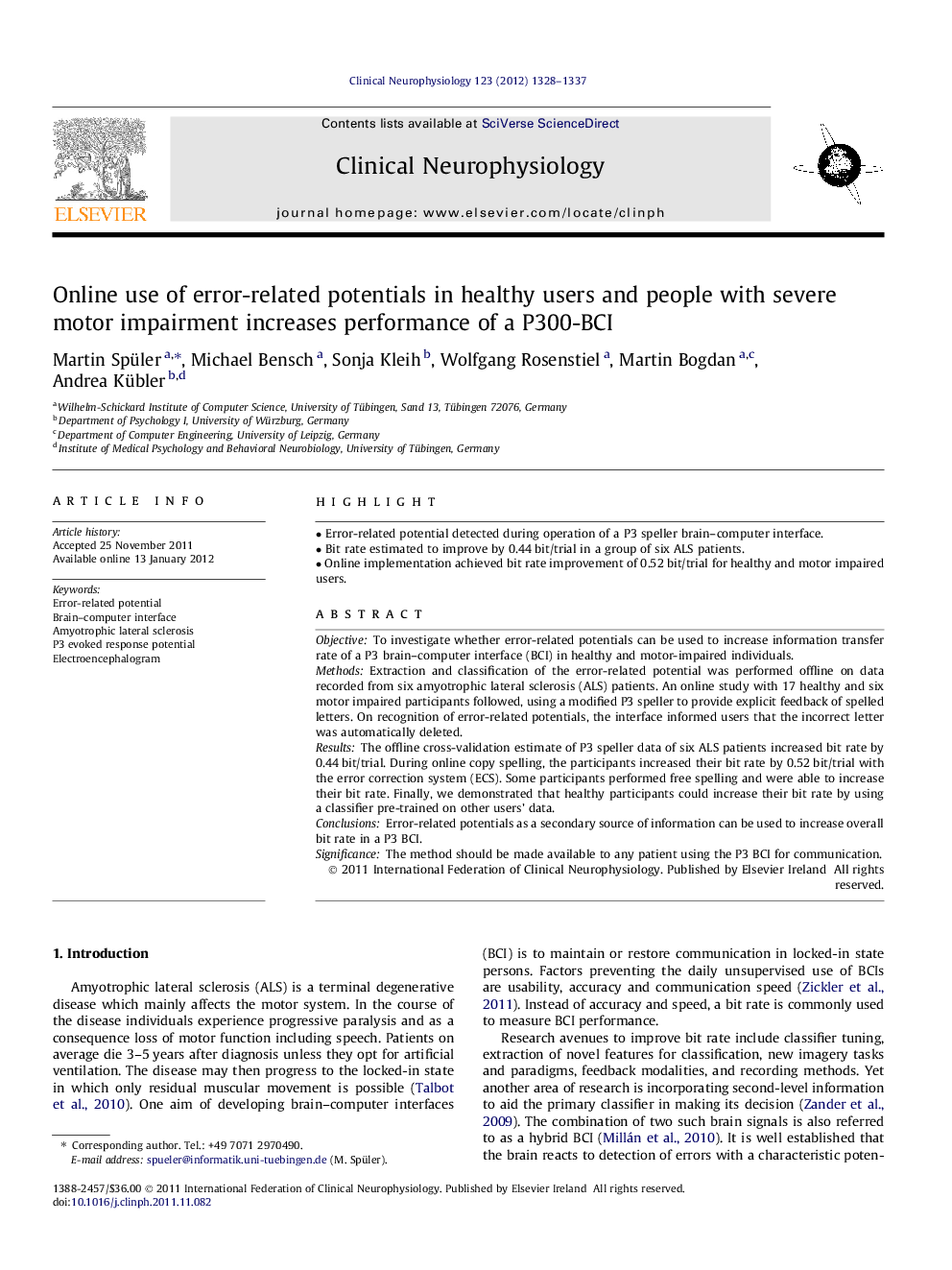| Article ID | Journal | Published Year | Pages | File Type |
|---|---|---|---|---|
| 3045495 | Clinical Neurophysiology | 2012 | 10 Pages |
ObjectiveTo investigate whether error-related potentials can be used to increase information transfer rate of a P3 brain–computer interface (BCI) in healthy and motor-impaired individuals.MethodsExtraction and classification of the error-related potential was performed offline on data recorded from six amyotrophic lateral sclerosis (ALS) patients. An online study with 17 healthy and six motor impaired participants followed, using a modified P3 speller to provide explicit feedback of spelled letters. On recognition of error-related potentials, the interface informed users that the incorrect letter was automatically deleted.ResultsThe offline cross-validation estimate of P3 speller data of six ALS patients increased bit rate by 0.44 bit/trial. During online copy spelling, the participants increased their bit rate by 0.52 bit/trial with the error correction system (ECS). Some participants performed free spelling and were able to increase their bit rate. Finally, we demonstrated that healthy participants could increase their bit rate by using a classifier pre-trained on other users’ data.ConclusionsError-related potentials as a secondary source of information can be used to increase overall bit rate in a P3 BCI.SignificanceThe method should be made available to any patient using the P3 BCI for communication.
Highlight► Error-related potential detected during operation of a P3 speller brain–computer interface. ► Bit rate estimated to improve by 0.44 bit/trial in a group of six ALS patients. ► Online implementation achieved bit rate improvement of 0.52 bit/trial for healthy and motor impaired users.
